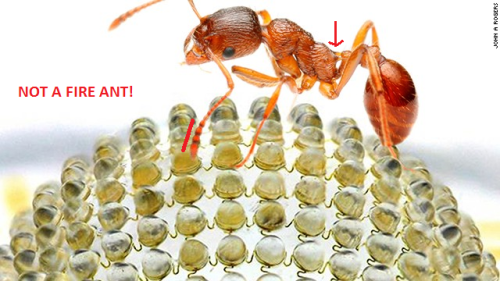The great physicist Richard Feynman, like all brilliant men, had a fascination with ants. I mean, how could this guy not like ants?

In fact, one of his books, Surely You’re Joking, Mr. Feynman!, includes a rather lengthy anecdote, or rather a series of anecdotes spanning many years, that detail experiments he carried out on ants. These largely focused on the nature of ants’ trail-making behavior. When in his Ph.D. program at Princeton, he casually tested some hypotheses about ant behavior using little paper ferries to carry ants back and forth from a food source. These experiments ended up having a practical benefit for him, as described in this excerpt:
In Princeton the ants found my larder, where I had jelly and bread and stuff, which was quite a distance from the window. A long line of ants marched along the floor across the living room. It was during the time I was doing these experiments on the ants, so I thought to myself, “What can I do to stop them from coming to my larder without killing any ants? No poison; you gotta be humane to the ants!” What I did was this: In preparation, I put a bit of sugar about six or eight inches from their entry point into the room, that they didn’t know about. Then I made those ferry things again, and whenever an ant returning with food walked onto my little ferry I’d carry him over and put him on the sugar. Any ant coming toward the larder that walked onto a ferry I also carried over to the sugar. Eventually the ants found their way from the sugar to their hole, so this new trail was being doubly reinforced, while the old trail was being used less and less. I knew that after half an hour or so the old trail would dry up, and in an hour they were out of my larder. I didn’t wash the floor; I didn’t do anything but ferry ants.
This is an excellent example of non-destructive “pest” control. To be sure, the ants probably returned the following year, and the year after that, but it is also unlikely that other “remedies”, like chemicals, would have permanently removed their presence. These critters are extraordinarily resiliant. It’s no wonder their collective biomass may match that of mankind.
Source
Feynman, Richard P. 1985. Surely You’re Joking, Mr. Feynman!
(H/T Ari).
Read Full Post »





